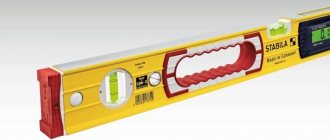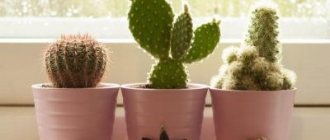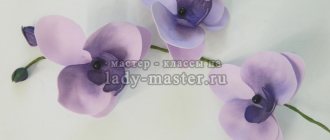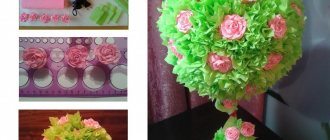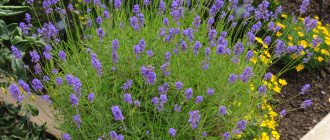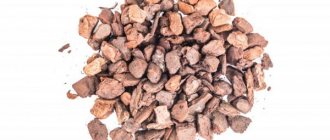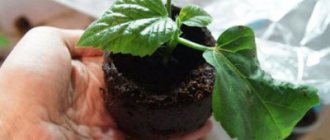Houseplant lovers know how difficult it can be to place all the flowers because window sills and tables are not enough to create a beautiful home greenhouse.
Those for whom growing indoor flowers becomes a real hobby always have a rich collection of various plants that require a lot of space. Each of them must be provided with enough well-lit space to ensure comfortable conditions.
To make them look impressive, it is important to place them well in the interior of the room. Floor, wall, and hanging flower shelves, which are made in any, even the most unusual design, are ideal for this.
Advantages of self-made shelves
There are products on sale that can be used to quickly solve the problem of placing a home flower garden. But they are not very diverse; they are the same type of standard designs.
When you make flower shelves yourself, you can create your own unique room design, choose the best option for each plant, and how to present it more effectively.
When you make shelves yourself, you can choose the materials for them yourself, calculate their dimensions, the required number of stands, and develop your own original design.
The cost of a shelf or several shelves will be much cheaper than store-bought products. And if you make such structures from waste materials, unnecessary old furniture or other suitable items stored in the house, then the only costs will be time and labor.
Backlight
Seedlings are grown in February-March, and this is not the sunniest time of the year. Plants may absolutely lack the light necessary for photosynthesis and mass growth. To solve this problem, additional lighting is installed on the racks. There are several types of lamps suitable specifically for growing seedlings.
- The most affordable and simplest option is incandescent lamps (17 Lm/W). They are ineffective because they provide little light and at the same time generate a lot of heat, which can harm the seedlings.
- Low-power fluorescent lamps, such as LB or LBT daylight (70–100 Lm/W). They produce cool light with a low proportion of red radiation.
Shelving illuminated with fluorescent lamps
Long-lasting and economical LED lamps (80–110 Lm/W). Their advantage is the ability to select the desired intensity and suitable spectrum.
LED lamps are easy to use and efficient
Metal halide sodium lamps (up to 100 Lm/W) are efficient and economical, and are also easy to use. The downside is that they do not contain a portion of the blue spectrum. Gas-discharge sodium lamps (200 Lm/W). Their yellow-orange glow is not irritating to the eyes, but they will require a regulating device. The glow of mercury lamps is as close as possible to the level of daylight. Phytolamps are very popular among gardeners, including for lighting seedlings. They are compact, environmentally friendly, economical and durable. Even if the seedlings are located close to such a lamp, burns will not form on the leaves.
Phytolamps for lighting seedlings
Also used are xenon gas-discharge lamps (100 Lm/W), halogen (25 Lm/W), linear (47 - 93 Lm/W), and neodymium.
When choosing a lighting device, pay attention to the presence of a choke. It gets very hot and heats up the shelf on top. Therefore, leave a gap of 4–6 mm between the shelf and the device. Lamps with electronic ballast do not have heating problems.
Whatever type of lighting you choose, keep in mind that seedlings will do better on the south side. To improve lighting efficiency, install reflective foil screens on the sides and back of the rack. Do not forget that each plant has its own level of illumination. You can adjust the intensity by changing the height of the lamps above the plants.
Installation of LED lighting
Due to their ease of installation and operation, LED lamps have become the most common among gardeners growing seedlings. You will need:
- red and blue LEDs;
- hot glue or thermal paste;
- a base for placing strips of LEDs (can be made of any material);
- a power supply that will provide the required voltage and current stability;
- electrical wire and plug.
Types of shelves for flowers
According to their designs and placement methods, flower shelves are divided into several types:
- Floor-standing. The most durable, reliable products that are especially suitable for large plants in large, heavy pots. They come in various designs - in the form of racks, whatnots, single stands, spacers, pyramids, A-shapes, ladders, etc. They require a lot of free space to accommodate them.
- Wall-mounted. Can be hung on walls using various fasteners. They allow you to save more space, especially corner ones. The most common types are shelves, racks, compositions of several separately placed single shelves or various original configurations (triangles, squares, honeycombs, etc.).
- Hanging. An excellent solution for saving space. Such structures are attached to ceilings, window openings, and are designed for light, small flower pots. For reliability, strong anchor hooks are used as fastenings to ceiling surfaces, onto which hanging shelves are then attached. Rope, leather belts, chains, cables and other suitable materials are used as hangers to which the shelves are attached.
- For window sills. Shelves for flowers on the windowsill are made in the form of small figured stands or in the form of multi-level racks that are attached to window openings.
All these structures can be installed not only indoors, but also used to decorate balconies, loggias, verandas, and some even open areas in summer cottages.
Compositions of several, made in the same style, different types of shelves - floor, wall, hanging - look beautiful. You can choose homogeneous materials for them (wood, plastic, metal) or combine different ones.
The following materials are used to make shelves:
- Wood. Shelves made of this durable, eco-friendly material, when assembled correctly, can withstand heavy loads. Wood is easy to process; even beginners can handle making shelves of simple designs. Experienced craftsmen make wooden shelves decorated with carvings, inlays, and paintings. Without professional training, you can beautifully decorate a shelf using the decoupage technique.
- Plywood. This material is even easier to work with, but it is no longer as durable as wood. Various shaped products can be easily cut from plywood. The original design can be made using the technique of painting with paints, decoupage, decorated with rhinestones, beads, other decor, and also covered with self-adhesive film with an imitation of any texture. Plywood shelves can be combined with other materials.
- MDF boards, chipboards. From the waste of these cheap, but durable and neat materials, with the help of a set of simple tools you can make cute original shelves. Cuts of all parts must be treated with a special adhesive tape, selected by color.
- Metal. This material is used in the form of profiles or chrome tubes for the frame, as well as metal grids or solid sheets for shelves. Beautiful exclusive products are made from forged metal.
- Plastic. To make shelves, plastic pipes, sheet plastic (transparent, colored, smooth, textured) and even PVC window sills are used.
- Strained glass. Transparent shelves visually save space. But they are only suitable for light, small flower pots. The glass should be no thinner than 0.5 cm. They are attached to metal frames with special clamps. Slots are made for them in the wooden frames, into which the glass is then inserted.
What forms are there?
Design templates have a huge selection of different variations. The following types of flower stands are often found in shape:
- Ladder. The multi-stage model will create a cascading effect in your floral corner.
- A-shaped floor models. This variation, in addition to the cascading body, has a double-sided position, which favorably emphasizes the visual image of a flower gallery.
- Rack. The simplest form of the options for floor or wall shelves. Here you can find the most unusual types of products: corner, straight, without crossbars.
- Retractable stand. The model is complex in execution, but convenient in practical use.
- The swing is paused. We have already mentioned this option: horizontal strips are laid on suspended supports.
Plywood wall shelf
To manufacture such a product with a structure assembled only from sheets, you will need plywood and veneer for processing cuts. If the plywood shelves will be attached to a wooden frame, then another beam is prepared.
Tools and additional materials you will need:
- a manual (or electric) jigsaw for cutting plywood along curly lines;
- circular saw - to obtain more even straight cuts;
- a set of figured files for processing edges;
- sandpaper for sanding surfaces;
- screwdriver;
- self-tapping screws;
- fastening elements, awnings;
- scissors, pencil, paper;
- PVA glue (or carpentry glue);
- stain, paints and varnishes for surface finishing.
How to make a shelf for flowers from plywood, sequence of work:
- draw a sketch and make patterns from paper;
- according to the patterns and calculations made, cut parts from plywood (timber);
- align the edges using needle files;
- sand the surfaces with sandpaper;
- assemble the entire structure using glue and screws,
- treat with stain;
- stick edge veneer tape onto the open sections of the parts;
- varnish;
- After the varnish has dried, secure the canopies.
Required Tools
To collect the configuration you will need the following tools:
- screwdriver;
- building level;
- electric drill;
- saw;
- pencil for marking;
- hammer;
- screwdriver;
- roulette;
- manage.
The choice of fasteners will depend on the raw materials of the future configuration. The heavier the raw material, the stronger the fastener. If you are planning to install a metal wall flower shelf, you will need to use a welding machine to attach it.
Otherwise, there is a chance that the stand will fall down soon.
Master class: plywood shelf
Making a shelf out of plywood is not difficult; first you need to prepare a suitable sketch.
- Plywood is easy to work with, you can cut out many interesting shapes, so the shelf will turn out unique and original.
- The sketch must be transferred to a sheet of plywood. It should be remembered that such a shelf will not withstand heavy loads, so you should not load it with flowers and overload it.
- To cut out figures, it is better to take a regular or electric jigsaw, after which you need to sand the cut edges of the saw with sandpaper and apply a special impregnation.
- The last stage is applying paint, which will allow the plywood shelf to become more resistant to damage and moisture.
The finished shelf can be decorated however you like, just use your imagination and prepare the necessary furniture.
Master class: shelf made of furniture panels and bars
Cutouts from glued furniture panels can be found in furniture workshops and bought for pennies. After all, shelves require very small parts that are difficult to find for other purposes. But you can also buy a sheet of the appropriate size.
This material is practically no different in appearance and characteristics from solid wood, it is just as easy to work with, and also requires a protective finish to increase moisture resistance. A neighborhood with which it is inevitable to put living plants on shelves.
Step 1. Decide on the number and shape of shelves, draw their outlines with a pencil on the cabinet panel.
Step 2: On the bad side, cover the outline with masking tape or masking tape to prevent chipping when cutting.
Step 3. Cut out the pieces with a puzzle.
Step 4. We fix the parts on the table with clamps and process their edges with a milling machine, rounding them or giving them a shaped shape.
Step 5. Remove all small irregularities and defects by sanding. To avoid the formation of abrasive scratches on the surface, sanding should be carried out along the grain of the wood.
Step 6. We also process the rods for the legs with a router, round the corners and smooth them until a smooth surface is obtained without scratches or burrs. If there is a desire and opportunity, they can get a curly shape. Otherwise, normal processing is sufficient. Also, instead of beams, you can use ready-made balustrades for stairs and railings.
Step 7: Flip the bottom shelf over, place the legs evenly on it, and trace each one at the base with a pencil. Then, in the center of the drawn square, we make a hole with a thin drill so that you can see where to screw in the self-tapping screw from the front side.
Step 8. Coat the ends of the legs with glue, put them in place according to the marks and fasten them with self-tapping screws using a screwdriver or screwdriver.
Step 9. Determine the position and height of the second shelf. It slides to the side relative to the bottom, so two legs of different lengths are needed: one on the floor and the other on the top of the bottom shelf. We calculate these dimensions, cut out the bars of the required length and fix them according to the already known pattern.
Step 10. Attach the third tier, one of the legs of which rests on the bottom shelf, and the other on the second.
Step 11. We coat the finished structure with varnish or varnish or impregnate it with a protective impregnation in two or three layers.
Master class: plastic shelf
Answering the question of how to make shelves for flowers with your own hands, you can try to make a plastic shelf, which is very convenient to use. The material used is a plastic window sill, which can be ordered separately.
Before this, you need to decide what the size of the shelf will be.
- You need to drill holes in the window sill for the legs, two on the sides and one in the center.
- A shelf is placed on the legs and all additional elements are attached.
- The most ideal place for such a shelf is a window, where it will look most appropriate.
- If you wish, you can use any plastic, you can even take an old plastic basin and cut out a shelf.
It can be mounted on the wall or hung, plastic shelves can be freely installed outside, they are not afraid of sudden temperature changes and precipitation.
Corner flower shelves
You can save space using a corner shelf. These products are floor-mounted and wall-mounted, placed on internal or external corners. They are made from any materials.
They can be compositions of several single shelves or full-fledged spacious racks. The assembly and fixation of such structures depends on their types and materials.
Floor shelf with drawers
Such models are quite rare, but they look amazing. The step-by-step manufacturing instructions are almost the same as in the previous case, with the exception of some nuances:
- the area of storage space for pots can be variable;
- it is not necessary to adhere to a specific structure: they can “look” in different directions;
- Such shelves will be supported on a vertical base made of wood or metal;
- they can be attached to it using bolts, as in the general case;
- The most difficult thing will be to make the boxes, but it is quite possible: just prepare rectangular or square elements, and then knock them together, giving the shape of a cube/parallelepiped (depending on the desired shape of the finished structures);
- Of course, it will be necessary to provide legs or wheels; as already noted, it is best to purchase them ready-made.
The procedure is similar , only instead of holes for the rope, recesses are made for installing legs if the shelf is classic, and a special base if it is “standing”.
Wooden shelves
The preparation of wood parts and the assembly of shelves from them is done using almost the same technology as from plywood. The resulting wooden flower shelves are stronger and have a greater variety of designs. They use timber and boards.
Even from the remaining scraps you can make beautiful original products. Interesting designs of flower shelves are made from ordinary containers - boxes, pallets.
Monoflower or composition of several crops?
A flower garden on a balcony or outside a window is no longer uncommon. But at the same time, you rarely come across a composition that makes you want to gasp when you see it. The thing is that apartment owners prefer to plant only one type of flower in a box. Such compositions can also be bright and interesting, but they are still inferior in decorative value to flower beds from several cultures - with different shapes and colors (for example, with straight and creeping stems).
Compositions even from two types of plants look original. However, in the most spectacular flower beds, 3-4 types of crops coexist. They are placed in the container according to the following rule. In the center are the tallest flowers that set the focal point. Next are the background plants, the stems of which are about a couple of times shorter. And finally, the frame is cascading plants.
Here are a few color and type “duets” that always look advantageous:
- white creeping petunia with red pelargonium;
- blue petunia with red salvia;
- yellow marigolds with red salvia;
- blue creeping petunia (first row) and yellow calceolaria, red salvia, yellow marigolds (second row);
- ivy yellow pelargonium with red pelargonium in the background;
- yellow-green mignonette and red pelargonium;
- red creeping fuchsia in the foreground and tuberous yellow begonia in the background;
- blue ageratums in the first row against a backdrop of upright red fuchsias.
If you plan to plant in 3-4 tiers, try not to make the composition look too colorful. It is better to choose plants in different shades of the same color and complement them with flowers with petals of a contrasting tone.
A beautiful flower garden outside the window is a whole art. Don't try to learn all the wisdom in one season. But don't be afraid to experiment. After all, this is the only way to create truly mesmerizing floral masterpieces.
Flower shelf made of wood and metal
Combined products with metal frames made of profiles or pipes and wooden shelves are assembled in the form of volumetric racks, small shelves, or hanging shelves.
Holders for pots are made from metal, which are then attached to wooden planks.
Other materials
The most popular material for creating flower shelves is plastic. It can be of different colors and textures. It's easy to work with. No special skills or special tools are required. Even a beginner in needlework can make shelves and racks made of plastic for placing plants, if he has such a desire.
It is impossible to list all the products that are offered in stores for constructing flower stands - they are too diverse. You can easily choose any option that is suitable for your case. And the cost of such “raw materials” is quite reasonable.
A shelf or rack for indoor plants can be a good gift for an amateur gardener. Especially if it is handmade. After all, by creating a thing yourself, you put a piece of your soul into it.
Forged metal shelf
Products made by artistic forging create a classic, luxurious environment. Such shelves can be made only of metal or combined with wood or glass. The results are very impressive interior details.
Most of these shelves are made to be floor-mounted due to their heavy weight. Forged shelves for flowers on the wall are made in small and medium sizes, and special fasteners with increased strength are installed for them. The walls must also be strong enough to support this weight.
Modern flower stands
Recently, popular interiors are increasingly looking for geometrically simple and laconic forms. And we like them for their simplicity. But not everyone is ready to give up plants. The good news is that even laconic techno styles can adapt to plants.
Their form should also be concise and strict. And also a floor stand. Look at yourself. Stands can be made of metal and wood in any style. Also for high-tech or minimalism style. And it’s not even worth talking about loft or rustic. There are many interesting ideas.
To get the maximum effect, you need to choose the right plant shape.
Shelf made of laminated chipboard and chrome tubes
To make such structures, you can use scraps from new laminated chipboards or parts of disassembled used furniture. To process cuts, you will need an adhesive edge or T-shaped (U-shaped) edges.
For chrome-plated tubes, you need to select flanges corresponding to their sizes, which are needed as supports for fastening the shelves. If the structure is floor-mounted, then you can install wheels to conveniently move the shelf with plants to another place, if necessary.
Work order:
- cut the required number of shelves;
- process the edges with an adhesive edge or edging (the U-shaped one is filled with a rubber mallet, for the T-shaped one you need to make grooves in the edges on a milling machine);
- Using a Forstner drill or a milling cutter, make holes in the prepared slabs that correspond to the size of the tubes; in the upper shelf they should not be through;
- insert the tubes into the holes and secure them with flanges on both sides of the plates (the top one with the bottom one);
- attach furniture wheels or legs to the bottom of the tubes.
Advantages and disadvantages
It is worth noting the advantages of shelves for flowers on the windowsill.
- They are original. Any design is distinguished by its shape and is able to convey the tastes of the home owners.
- Flower shelves allow you to create a composition of plants.
- These coasters are unique. They can be used for flowers, seedlings, and sometimes as organizers.
- They are comfortable. Often, such products allow you to place flowers without having to adjust the size of a specific pot.
- The stands are variable. If desired, you can choose a design with holes or a solid working surface.
- Models vary in size. The buyer has the opportunity to purchase stands for specific window measurements.
- Products differ in color. This allows you to buy a suitable option to suit your preferences (or to match the existing furniture).
- They are available. Today they can be bought in many stores, which simplifies the purchase and allows you to choose the option you like.
- Models differ in price. If desired, the buyer can update the design of the window sills with new (cheaper or more expensive) products.
Popular articles Eschscholzia flowers - planting and care in the garden
The disadvantages of such structures are associated with a decrease in the amount of light entering the room when they are used. As a rule, any design prevents the sun's rays from filling the room with light in the required volume. Therefore, in rooms with windows on the north side, such shelves are not always appropriate. In addition, multi-tiered options for windows are not the right solution. They visually change the perception of the interior composition and create a heavy atmosphere in the room. Some varieties are aimed at strict functionality, which is why they sometimes look ugly.
Glass shelf on the window
Glass shelves look light and airy and transmit light well, which is beneficial for plants. They choose strong tempered glass with an optimal thickness of 0.5 cm. They are made in the form of racks with wooden or metal frames that are attached to window openings.
The structures can be solid with vertical and horizontal supports, as well as without vertical supports, when only horizontal supports are attached to the window frame, on which glass shelves are then laid.
Proper care of violets
Violets under the ceiling - an interesting combination of business and pleasure
In order for a violet to grow and delight you with its blooms, you need to take care of it. Otherwise, it may get sick, spots will form on the leaves, they will curl and wither.
To prevent this from happening, you need to follow some rules in caring for this delicate flower:
- Avoid direct exposure to sunlight. Violets love diffused light, but do not like bright sun. For a plant to bloom, it needs to be exposed to light for at least 12 hours a day. If there is not enough light, the leaves will tend to rise; if there is too much light, on the contrary, they will fall over the edge of the pot. In order for violets to delight with their flowering all year round, it is worth arranging for them a rack with fluorescent lamps with a power of 40 W.
- By maintaining this temperature regime, the plant blooms long and luxuriantly and grows strong. If the plant blooms in the summer, in a heat of more than 30 degrees, it is noted that the flowers are smaller and paler; on the leaves of different types of violets, characteristic specks or borders are absent or weakly expressed. To correct the situation, you can use an air conditioner or a stream of fresh air from an open window. In the cold season, you need to beware of drafts; if the plant freezes, its root system will die, and if it is exposed to cold air for a long time, light spots will appear on the leaves, which will significantly spoil the appearance of the violet.
Wooden shelving of different heights
- It is advisable to water the plant with water without additional impurities. For these purposes, ordinary tap water is also suitable, which should be allowed to stand for a couple of days to get rid of excess chlorine. Next, you should boil the water to get rid of the salts and leave to cool. The liquid for irrigation should have a temperature higher than the soil in the pots and the air in the room. It is noteworthy that water at room temperature is not suitable for watering plants, especially in winter, when the plants on the shelf have a higher soil temperature than the water. Because of this, centopolias often die en masse during the cold season. It is best to water violets from above, pouring water into the pan. After 10-20 minutes, it is advisable to get rid of excess water, since its excess can lead to rotting of the roots. Once a month, you need to wash the leaves with a damp cloth and a spray bottle.
- To ensure normal growth of the violet, the humidity in the room must be at least 50%. During the heating season at home, this rule is not easy to follow. As an option, you can place an open container of water near the plants or use a humidifier. However, there is no need to be too zealous, because at a humidity level of more than 70%, the plants will be actively attacked by fungal diseases.
Metal rack with separate lighting for each shelf
- Soil and fertilizers. The soil must retain moisture and nutrients well; for this, you can additionally add perlite or vermiculite - these are natural minerals. The violet needs drainage; for these purposes you can use foam chips. The acidity of the soil is not least important; neutral or slightly acidic is suitable for violets. During vigorous growth, the plant needs phosphorus and potassium; thanks to these additives, the violet blooms magnificently. Once every 3-4 weeks these substances should be added to the soil.
- A plastic pot is suitable for violets; it is easier to care for. Each time the plant is replanted, the diameter of the pot should be increased. It is believed that the diameter of the plant should be 3 times larger than the diameter of the pot. When replanting a plant, you do not need to compact the soil too much, as this will prevent water from saturating the soil, and soil that does not dry out for a long time will lead to rotting of the root system.
Popular articles Vanda Orchid: growing and care at home
Ideas for making unusual shelves with your own hands
To make original designs for flower shelves, you can use the following ideas:
- the shelf is made in the form of a tree trunk; liana plants, reminiscent of tree branches with leaves, are placed on the stands;
- an arch in the shape of a heart is made, on the stands of which flowering plants are placed;
- The floor structure can be made in the form of a pyramid, house, bicycle, and the wall structure can be made in the form of a honeycomb, stairs, waves.
Pros and cons of wood as a material
Wooden structures used to organize a home greenhouse have their advantages and limitations. Not every one can be taken out onto the street or balcony. The tree can be hard or soft, but under the influence of moisture it will swell, and when the temperature changes, it will crack. Wooden products or parts must be protected from excess moisture. For this, stains, moisture-resistant varnishes, enamels, and paints are used. Protection is especially important for outdoor structures that are exposed to sharper temperature changes, swell more and dry out in the sun.
Advantages of wood as a base:
- Environmentally friendly, beautiful design, complex shapes can be turned.
- Trees have energy similar to plants.
- Such designs fit well into classic interiors, country, Provence, and Mediterranean styles.
- The cost of wooden stands depends on the value of the wood and the complexity of the decorative finishing.
Despite the many positive aspects, there are also disadvantages. Any coating is destroyed over time by moisture - the flowers are regularly watered and sprayed. The condition of the stand will have to be carefully monitored and the coating restored if necessary. If the wood has not undergone proper treatment before manufacturing, wood borers, termites and other pests can live in it, which, if neglected, will damage other furniture.
Simple rules for arranging shelves
When placing flower shelves, take into account the illumination that is necessary for plants. Shelves are installed further from the window for shade-tolerant plants, and those that love bright light are placed in well-lit places, but not in direct sunlight.
Some plants cannot tolerate drafts, especially when ventilated during the cold season. When arranging shelves, it is important to create a healthy environment for all plants.
All designs in color and shape must fit harmoniously into the interior of the room.
A few facts from the plant world
Uzambara violet is not just a common houseplant, but also an object of endless selection. It's hard to believe, but until 1892, Europeans were unfamiliar with Saintpaulia. These flowers first came to America in 1927. Today it is impossible to name the exact number of varieties.
The largest database is maintained by the American association AVSA (African Violet Society of America). Its Saintpaulia registry contains more than 16 thousand varieties. But, according to experts, the full list could be twice as long, since registration with AVSA is paid and is only advisable in cases where breeders plan to present the variety at exhibitions in the United States.
In 2013, Russian enthusiasts compiled a register of varieties bred in our country and in the CIS countries. This also includes a retro collection of violets created during the Soviet era. At the time of its creation, the register described more than 2,000 domestic items. But new products appear every year, the numbers are constantly growing.
Conclusion
You can make beautiful flower shelves yourself without any special preparation. First you need to come up with your own original design or find a ready-made one suitable for the interior of the room where the plants will be placed.
Available materials make excellent products that create an unusual atmosphere in the room and become bright decorative elements.
The final stage is decoration
By creating a shelf, you can create your own product design. By choosing the right materials and taking a little time, you will get a unique masterpiece!
- For example, a plastic product comes in different colors. For an original design, you can attach decorative handrails.
- The wooden shelf is painted with sequins. This gives the product shine and shine.
- Glass shelves are often decorated with patterned metal elements.
Also, for a craft to become beautiful, it is not necessary to paint it or attach anything to it. Just place vases and beautiful stones, toys, shells on it. In addition, furniture can be decorated with various fakes and toys.
Don't be afraid to experiment! Create new masterpieces and improve your skills! An indoor planter is just the beginning. Nothing brightens up your home like handmade items.
Do you need lighting?
When assembling a rack for seedlings with their own hands, some gardeners think that they can do without additional lighting. It is worth noting that even for a structure that was mounted on a window, it is necessary to provide for the presence of lamps of the appropriate type.
In winter, daylight hours are quite short. Due to lack of natural light, seedlings may not develop well. Photosynthesis processes will proceed slowly. Because of this, biomass growth will not occur at the required pace. In order for plants to develop normally, it is necessary to install additional lighting on the rack. This will provide normal conditions for the seedlings and allow the seedlings to gain strength before transplanting them to the site
It is important to choose the right lamp that will meet all requirements
Window sill rack
This type of rack allows you to install boxes with seedlings next to the window. This certainly plays a positive role, especially in terms of lighting. This design does not require the installation of lamps. However, this scheme also has its disadvantages. For example, the size of such a rack is limited by the width of the window sill and window. Therefore, some types of plants may not fit here.
Window sill shelving diagram.
| Side racks | Metal profile, pipe, an option with timber is possible. |
| Fastening under shelves | Metal corner No25 |
| Canvas for shelves | Wooden board, chipboard, glass, sheet metal |
Before starting work, as usual, we prepare the project and draw a drawing. It must indicate the dimensions of all future structural parts. This will prevent confusion during the assembly process.
- First of all, we assemble the side parts of the rack. To do this, two rectangles are made from the profile by welding. Their height is five centimeters below the window opening. In depth they are equal to the width of the slope.
- We fasten both rectangles together with long pieces at the bottom and top.
- The frame for the shelves is welded from corners.
- We make special threaded holes in the side posts (you can simply weld a nut). This will allow you to firmly clamp the structure between the window sill and the upper slope using bolts.
- At the last stage, the structure must be treated with an anti-corrosion agent and painted.
- After this, we cut out and fasten the shelves.
This type of rack is good because it can be removed from the window at any time by unscrewing the bolts and moved to a new location.
Video instructions for making a simple window rack
The video below is perfect for beginners. The design of the rack is very simple, airy, the author successfully chose the necessary camera angles and revealed in detail all the manufacturing aspects.
How to assemble a rack
You need to decide on the dimensions of the structure:
- overall size;
- height and width;
- distance between shelves;
- shelf size.
If the rack is stationary, then it must be assembled immediately in the room in which it will be installed.
- The frame of the side posts of the rack is made from a profile pipe; for this you need to weld or bolt two identical rectangles.
- At a distance of 20 centimeters from the bottom of the rectangles, a transverse section of pipe is welded for stability of the structure.
- The same beams need to be welded from the top.
- Reinforce the structure by welding one jumper approximately in the middle in the side rectangles.
- To attach the shelves, you need to make holes in the rack posts, the number of which will be equal to the number of shelves. The minimum distance between holes is 25 cm.
- Cut the corner profile exactly to the width of the shelves.
- Attach the profile to the posts at the drilled holes using bolts and nuts.
- Cut plywood or OSB and place it on the profile; if desired, you can cut out shelves from sheet iron.
As you can see, there is nothing complicated in this design, and it is assembled quite simply.
You can also make a rack without resorting to welding; in this situation, instead of a profile pipe, a metal corner of 5 is used. In terms of cost, such a design will be a little cheaper and will be easy to disassemble.
